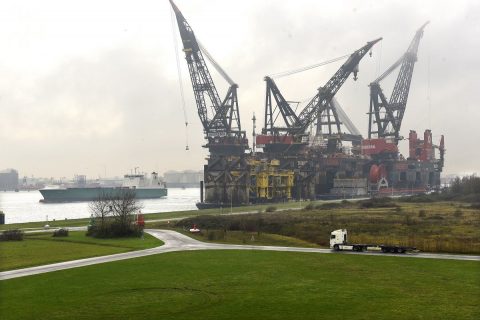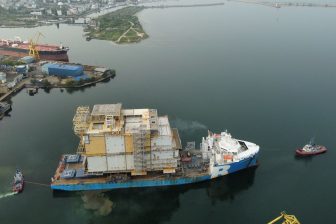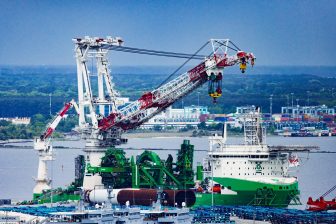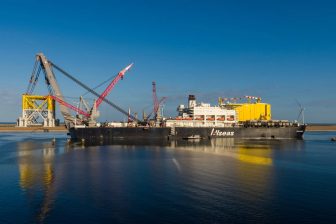
Bakker Sliedrecht readies Heerema’s crane vessels for shorepower
Bakker Sliedrecht will electrify the crane vessels Thialf and Sleipnir of Heerema Marine Contractors so that they can be powered by green shore power. The shore power connection allows the vessels to turn off their diesel generators, which significantly reduces noise and CO2, nitrogen, sulphur dioxide and particulate matter emissions.
The electrification of the vessels is part of a shore power project, in which, in addition to Heerema, power company Eneco, the Port of Rotterdam Authority and the City of Rotterdam are also participating. Wind turbines at the quay of the Calandkanaal in Rotterdam generate this sustainable energy.
As part of the project, nine modern wind turbines with a total capacity of 27 MW will replace ten existing wind turbines on the headland at Rozenburg. Since August, the project consortium has been building a so-called e-house on the quay near the canal. This is a gigantic socket that can supply 20 MW (2 x 10 MW) of green wind energy.
Fewer emissions
Heerema is their first client. The offshore company’s Thialf and Sleipnir are the largest crane vessels in the world. About 400 people can live and work onboard. During the winter period, the crane vessels are regularly moored in the Calandkanaal in Rotterdam, for maintenance or in preparation of projects at sea. Normally, all onboard facilities are powered by diesel generators.
By connecting the ships to sustainable shore power from the new e-house, they can be turned off and save emissions equal to that of 5,000 diesel cars. CO2-emissions into the air are reduced by 15,000 tonnes and the vessels produce hardly any noise.
Onboard modifications
In order to use this sustainable shore power, Bakker Sliedrecht is carrying out various adjustments on board. Bakker Sliedrecht will, among other things, supply the required transformers, shore connection switchboards and interface to the existing power distribution system. The company will also expand the existing installations and switchboards and install low and high voltage cables. The voltage must be converted from 11 kV to 4.16 kV.
All new equipment will be installed onboard the Thialf early next year. After that, the work on the Sleipnir will start. That crane vessel is brand-new, which is why fewer electrical adjustments are required there and the work package is less extensive.
You just read one of our premium articles free of charge
Register now to keep reading premium articles.




